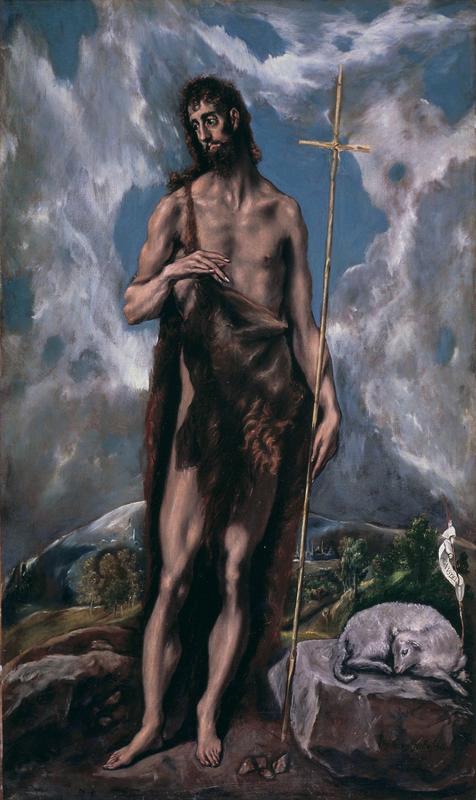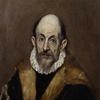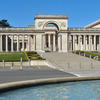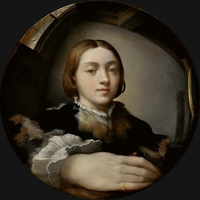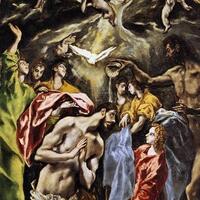More about St. John the Baptist

Contributor
El Greco was here to depict saints and impress King Philip II. And he was all out of impressing King Philip II.
El Greco and John the Baptist had a lot in common. Both were groundbreaking figures in their respective fields: John was so ahead of the curve on Christianity that he was preaching about Jesus before the man himself had actually gotten big, and El Greco painted in such a strange and new way that he essentially started his own one-man art movement. Both were considered pretty weird dudes by their neighbors: John lived alone in the wilderness and ate honey-covered locusts while preaching about the end of the world, and El Greco's eccentric, dreamy style was so unconventional at the time that people questioned his sanity. Both had really obvious nicknames: John was a guy who baptized people, and El Greco was a Greek person living in Spain. The comparisons make themselves.
But even disregarding how well they probably would have gotten along, it was basically inevitable that El Greco would one day turn his paintbrush to the task of portraying Christ's favorite relative. El Greco never met a saint or a Bible story he didn't feel compelled to paint—there's enough Biblical imagery in his body of work to make the Pope shift uncomfortably in his chair—and since Christians and Muslims alike venerate John as a prophet, his portrait was a guaranteed crowd-pleaser in 16th century Spain, where both groups had a significant presence.
Forsaking the traditional Renaissance image of John as a desirable figure of masculine beauty, El Greco doubled down on his signature gaunt, elongated human figures, giving us a Baptist who truly looks like he's spent some years on a strict bug-meat-and-condiments diet, with nothing to keep himself busy but impromptu cross-assembly. (The cross wasn't venerated in John's lifetime, considering Jesus was decidedly un-crucified when they knew each other, but painters frequently gave him one anyway just to remind viewers they were looking at somebody with pull Upstairs). If the cross wasn't enough to clue everyone in to the holy subject matter, the little sheep in the corner is meant to foreshadow John's involvement with the Lamb of God, whose Latin title is helpfully written on the tiny flag over his shoulder.
The dimly-glimpsed building in the background is commonly believed to be the recently-constructed palace of the King of Spain, whose favor El Greco had fallen from some years ago and whose approval he might conceivably have been trying to gain back. Whatever his intent was, El Greco's “You see those pointy things way back there? That's your house!” strategy somehow failed to win His Majesty over, and he lived out the rest of his career without royal patronage.
Featured Content
Here is what Wikipedia says about Saint John the Baptist (El Greco)
Saint John the Baptist is an oil on canvas painting executed between 1597 and 1607 by the Greek artist El Greco whilst living in Spain. It is in the collection of the Legion of Honor museum, a component part of the Fine Arts Museums of San Francisco.
The painting depicts a young Saint John, dressed in animal skins, holding a long staff with a cross-shaped top. Beside him sleeps a lamb on a rock, representing the "Agnus Dei" (Lamb of God i.e. Jesus Christ), whose coming he prophesied. The work is autographed in cursive Greek script on a rock to his left. The clouds about his head resemble a halo. In the distance can be made out the monastery of El Escorial.
The work was once held by the Convento de San José in Malagón, Ciudad Real before passing via several private collections to the M. H. de Young Memorial Museum, part of the San Francisco Museum of Fine Arts, in 1946. The Young collection was transferred in 1972 to the Legion of Honor.

Another version of the painting (see left), differing in that some of the nearby rocks and distant background are absent, exists in the collection of the Museu de Belles Arts de València, Valencia, Spain.
Check out the full Wikipedia article about Saint John the Baptist (El Greco)

